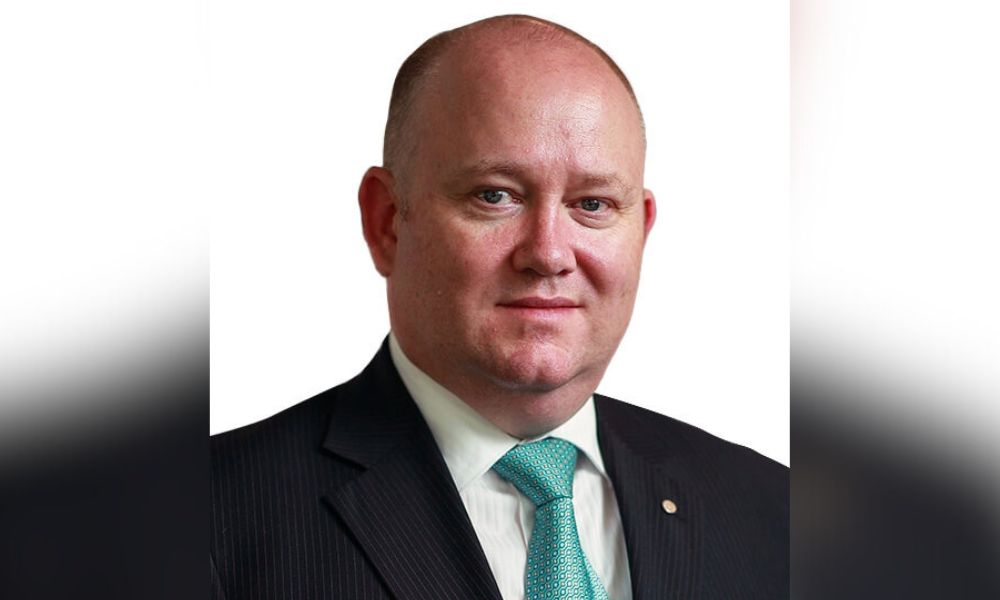Former Rural Fire chief urges insurers to tackle underinsurance

Former Rural Fire chief urges insurers to tackle underinsurance | Insurance Business Australia
Catastrophe & Flood
Former Rural Fire chief urges insurers to tackle underinsurance
With more help for “good faith” customers
Catastrophe & Flood
By
Daniel Wood
On Thursday, Duck Creek Technologies, the US-based global firm specializing in digital insurance technology, held a Sydney conference. The keynote speaker was Shane Fitzsimmons (pictured above), the former commissioner of both the NSW Rural Fire Service and Resilience NSW.
Fitzsimmons was responsible for helping the state through the 2019-20 Black Summer of megafires and then four major floods in the years that followed.
Insurance Business was invited to the event, called Duck Talk APAC 2023 Redefining Resilience. IB asked the former commissioner what he thinks insurers could improve about how they handle natural catastrophes.
Underinsurance in “good faith”
“I’ve spent a fair bit of time with the different insurance companies over the last couple of years and I think somehow we’ve got to try and collectively work on how do we tackle underinsurance,” said Fitzsimmons. “Particularly where people are taking out insurance premiums in good faith.”
He said insurers need to find a way to differentiate between customers who buy home insurance premiums in good faith but are underinsured and those who deliberately choose to lower their premiums and lower their insurable value.
Fitzsimmons gave an example.
“In my previous home I was on the edge of a bushfire interface, I was in a flame zone,” he said. “When I go online to various insurance companies, if I go in there, I get asked the generic suite of questions like what’s the construction material, how many bedrooms is it? How many levels is it? Is there a garage?”
Fitzsimmons said the website then “spits out guidance” on an insurable amount and a premium
“Yet everyone knows, especially the insurance companies based on the data sets, that I’m in a flame zone,” he said. “So to rebuild that home is going to be at least another 20% or 30% of the value on top of what a conventional home is and that’s not necessarily being factored in all the time.”
Preventing “unfair” anger at insurers
He said the new technology should be used to help customers understand their risks better.
“I think proactively, particularly with a lot of the data and AI [artificial intelligence] work that’s going on looking at data sets, we can understand the dynamic risk profiles and the residual risk profiles,” said Fitzsimmons. “The challenge is how do we convert that to a customer interface that allows considered decisions so that when it comes time for processing claims, people don’t get unfairly angry with the insurance industry, when they’ve found they’re being done in terms of their insurance package, even though they’ve taken it out in good faith.”
Insurers’ “proactive presence” in the field
However, the former Rural Fire Service commissioner was broadly positive about the insurance industry and commended the industry for its “proactive presence in the field” during natural catastrophes.
“As I’ve said publicly before, I think the proactive presence in the field in times of crisis is a big and important strategy,” he said. “There’s nothing more valuable than having that face to face contact, which can be supplemented and complemented through telephony services and those sorts of things.”
Fitzsimmons was clearly impressed by the speed with which some insurance firms were able to deploy staff to disaster areas.
“I’ve seen assessors being scrambled from all across Australia, New Zealand and arriving in these disaster areas,” he said. “They’re out there as quickly, literally, as the response agencies are giving them permission to come in.”
Avoiding assistance packages and insurance conflict
Fitzsimmons encouraged insurers to continue working with governments, particularly in light of big government assistance packages that could, he suggested, inadvertently influence peoples’ decisions about insurance coverage.
“I think continuing to work closely with governments because if I look at the fires and the four floods that I was involved with – in March 2021 and then the three big flood events of 2022 – the support packages that were announced by government during that were $10 to $12 billion worth of support measures and assistance.”
He was concerned that, without close government-insurer cooperation, these packages could disincentivise the purchase of insurance.
“We’ve got to make sure that the insurance sector and governments are working closely together so that the unparallelled number of assistance measures and packages being announced by governments don’t become … unintended perverse outcomes and disincentives for insurance either,” said Fitzsimmons.
He said there’s a balance to be made and “We’ve got to try and strive towards getting that right.”
However, his main point remained encouraging insurers to do more to help “good faith” customers.
“But I do think the good faith customer that thinks they’re getting covered should be able to do so with the support of their insurance company that’s helping with that policy,” said Fitzsimmons. “If people make a decision to lower their premiums and lower their insurable value, then that’s [a] completely different ballgame – but they need to understand the consequences.”
Fitzsimmons is currently chair of the Youth Insearch Foundation, a peer-led youth trauma recovery organisation for supporting at-risk youth aged 12-25.
What do you think can be done about “good faith” customers who are underinsured when disaster strikes? Please tell us below
Keep up with the latest news and events
Join our mailing list, it’s free!






